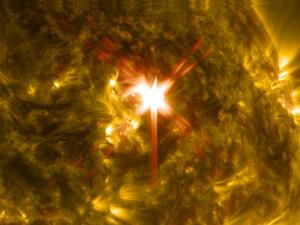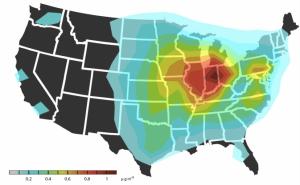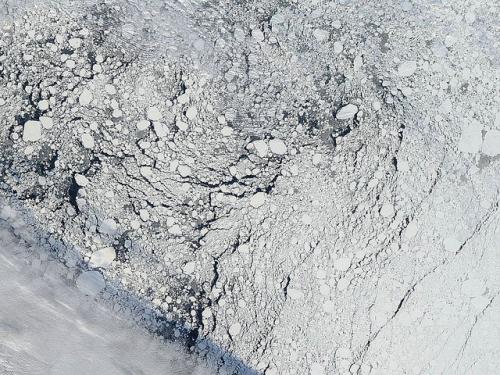Science
Nanosheets and nanowires

This is a typical TEM image of as-prepared GeS nanowires with the inset showing a selected area electron diffraction pattern taken from GeS nanowires.
- Read more
- 354 reads
Carbon nanotubes grow in combustion flames

This is a carbon nanotube growth.
- Read more
- 433 reads
NASA Releases Images of X-class Solar Flare

Extreme ultraviolet light streams out of an X-class solar flare as seen in this image captured on March 29, 2014, by NASA's Solar Dynamics Observatory. This image blends two wavelengths of light: 304 and 171 Angstroms, which help scientists observe the lower levels of the sun's atmosphere.
- Read more
- 345 reads
Satellite Shows High Productivity from U.S. Corn Belt

The magnitude of fluorescence portrayed in this visualization prompted researchers to take a closer look at the productivity of the U.S. Corn Belt. The glow represents fluorescence measured from land plants in early July, over a period from 2007 to 2011.
- Read more
- 343 reads
Nano-paper filter removes viruses

The illustration shows the nanofibers in white and the virus in green.
- Read more
- 335 reads
Heat-conducting polymer cools hot electronic devices at 200 degrees C

This scanning electron microscope image shows vertical polythiophene nanofiber arrays grown on a metal substrate. The arrays contained either solid fibers or hollow tubes, depending on the diameter of the pores used to grow them.
- Read more
- 414 reads
Research Clarifies Health Costs of Air Pollution from Agriculture

The map shows increase in annual mean surface concentration of particulate matter resulting from ammonia emissions associated with food export. Populated states in the Northeast and Great Lakes region, where particulate matter formation is promoted by upwind ammonia sources, carry most of the cost.
- Read more
- 297 reads
Scientists solve riddle of celestial archaeology
2520Exoplanet%25201%2520small.jpg" width="300" height="240" alt="WD%20Exoplanet%201%20small.jpg" />
Artist’s impression of debris around a white dwarf star.
- Read more
- 299 reads
Seasonal Arctic summer ice extent still hard to forecast, study says

An image of an area of the Arctic sea ice pack well north of Alaska, captured by the MODIS instrument on NASA's Aqua satellite on Sept. 13, 2013, the day before the National Snow and Ice Data Center estimated Arctic sea ice to have reached its minimum extent for the year. A cloud front can be seen in the lower left, and dark areas indicate regions of open water between sea ice formations.
- Read more
- 319 reads
Human Rights
Fostering a More Humane World: The 28th Eurasian Economic Summi

Conscience, Hope, and Action: Keys to Global Peace and Sustainability

Ringing FOWPAL’s Peace Bell for the World:Nobel Peace Prize Laureates’ Visions and Actions

Protecting the World’s Cultural Diversity for a Sustainable Future

Puppet Show I International Friendship Day 2020


